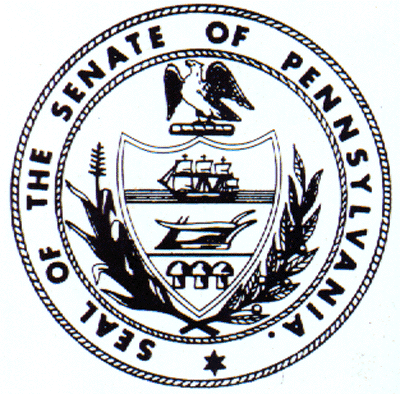|
|
|||||||
FUMO CALLS FOR REORGANIZATION OF SHIPYARD MANAGEMENT HARRISBURG, October 30, 2003 – It is imperative that Governor Rendell immediately take steps to reorganize the Philadelphia Shipyard Development Corporation (PSDC) to ensure competent project oversight, and to safeguard the commonwealth’s interests when the shipbuilding company Kvaerner assumes full responsibility for the yard by the end of 2004, State Senator Vincent Fumo (D-Philadelphia) said today. Serious questions continue to surface concerning Kvaerner’s long-term commitment to shipbuilding in Philadelphia. The original agreement with the Commonwealth, signed during Gov. Tom Ridge’s first term, called for Kvaerner to build at least three ships at the former Philadelphia Navy Yard with the aid of more than $400 million in public subsidies. The company is about to complete its second ship, but has no contract for sale of a third. Kvaerner would be free to shut down its Philadelphia operation after building the third ship. It could also withdraw from Philadelphia without building even the third ship by paying a penalty of just $20 million. A report by the Senate Democratic Appropriations Committee, which Fumo chairs, is attached. The shipyard is in Fumo’s Senatorial District. # Kvaerner Management, 2003 The Philadelphia Shipyard Development Corporation (PSDC) was established to provide direct oversight of the Kvaerner project for the commonwealth, following a 1997 agreement under which the Norwegian shipbuilding company established operations at the former Naval Yard. The five-member PSDC board is composed of three members appointed by the Governor, one member appointed by the Delaware River Port Authority (DRPA), and one member appointed by the City of Philadelphia. A report on the shipyard by the Auditor General in August 2000 documented countless examples of inadequate and reckless PSDC supervision. In the three years since that report was published, there is little evidence that any substantial improvement has been made in this performance. The Governor should immediately take action to replace the three appointees who serve at his pleasure, and ask the DRPA likewise to appoint a new designee, all of whom should possess an appropriate background to competently monitor shipyard activity and ensure performance consistent with the current Master Agreement, or where appropriate, negotiate new agreements to protect the commonwealth’s interests. *** It has been nearly six years since the original Master Agreements were signed to bring Kvaerner to the Philadelphia Naval Shipyard. The financial position of the parent company, now Aker Kvaerner ASA, has been stabilized following the substantial infusion of capital through its merger with Aker Maritime ASA. Contracts have been negotiated with Matson Navigation Company, a West Coast-Hawaii shipping company, to purchase the first two containerships built at the yard. But no contracts have been signed for any further purchases, suggesting that questions linger regarding the long-term viability of the facility. Under its contract with the commonwealth, Kvaerner is committed to building just three ships, but a provision of that contract allows it to shut down prior to building a third ship by paying a penalty of only $20 million. The public subsidy in excess of $500,000 per job makes the Kvaerner Shipyard in Philadelphia the most heavily subsidized private investment project in U.S. history. Although the original plan projected 1,000 jobs at the yard, peak employment so far has reached only about 800. The most troubling aspect of the original Kvaerner agreement was the substantial public investment without any required equity commitment by Kvaerner. The deal structure placed the commonwealth at tremendous financial risk and our worst fears were nearly realized when Kvaerner flirted with financial insolvency for a two-year period before its eventual merger with Aker Maritime. The original Kvaerner deal required a private investment of only $15 million during the initial five-year period when the first three ships were expected to be built. All of the $429 million in public subsidies were required to be expended to build the new shipyard and subsidize initial operations during this same time period. An additional Kvaerner commitment of $120 million in working capital was to be paid out during the following 10-year period after the year 2002. The only significant financial commitment assumed by Kvaerner during the construction phase of the project was a responsibility for cost overruns. Unfortunately, when cost overruns occurred, simultaneously with Kvaerner ASA’s financial difficulties, a bad deal for the commonwealth was renegotiated to be even worse. A $50 million job training commitment that was part of the original financing plan was redirected to fund the cost overruns. Initial completion of the first phase of the project was delayed by more than a year, while Kvaerner was able to strengthen its legal right to walk away from the project with little adverse consequence. Fortunately for the commonwealth, to date our full exposure to this risk has not resulted in Kvaerner’s abandonment of the yard. The Auditor General’s August 2000 audit of the Kvaerner project was particularly critical of the state’s failed effort to maximize regional suppliers in the construction of the yard. At the time of the audit nearly 80 percent of $60 million in equipment contracts had been awarded to foreign firms, including the Goliath-class gantry crane that remains the most visible image at the revitalized shipyard. No Pennsylvania or other U.S. firm was even given the opportunity to bid on the contract to supply the crane. Since the audit was published some limited steps have been taken to improve this performance, including a series of outreach presentations to Pennsylvania and New Jersey firms, creation of a supplier network web site, and organization of a June 2002 conference to introduce local and regional suppliers and their European counterparts to teaming and relocation opportunities. The Casey audit recommendations suggested several more significant steps, including an actual amendment to the Master Agreement to make it absolutely clear that Section 8(g), the section pertaining to PSDC monitoring of supplier contracts, applied to both construction of the shipyard as well as the shipbuilding phase of the project. The renegotiated Master Agreement allowed KSI (the subsidiary of Aker Kvaerner ASA that runs the shipyard) to avoid assuming immediate responsibility for construction cost overruns in part by agreeing to expend an additional $50 million for job training costs. Exhibit S-1 of the renegotiated Master Agreement outlined a disbursement schedule for KSI expenditures pursuant to this agreement commencing in 2002. The PSDC in concert with the Department of Labor and Industry should initiate a formal reporting process to the General Assembly outlining KSI’s performance to insure these investments are made. *** On January 1, 2005 KSI is scheduled to assume full operational responsibility for the shipyard. Within the next 90 days it is recommended that Governor Rendell take the following actions.
*** The public subsidy of the Kvaerner Shipyard in Philadelphia was unprecedented in U.S. history. Nothing can be done to erase the past missteps that have dogged this project from its beginning. It is imperative, however, that we take serious steps now to protect the commonwealth’s investment. While the shipyard has not produced the unrealistic returns promised by its most enthusiastic supporters, fortunately we do have an operating shipyard in Philadelphia. We must do all within our power to maximize the economic returns the commonwealth does receive from the project.
October 30, 2003
| |


